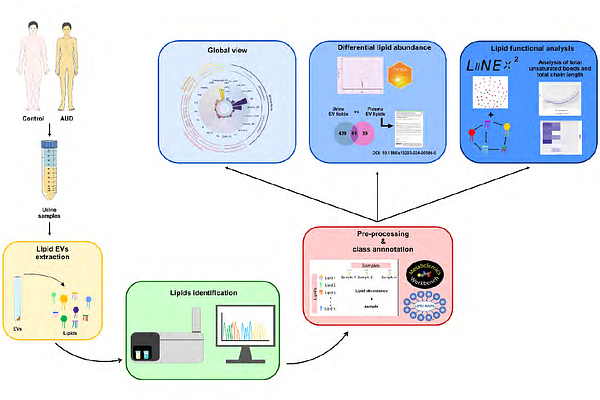Deciphering lipidomics landscape of urine extracellular vesicles in alcohol use disorder patients

Deciphering lipidomics landscape of urine extracellular vesicles in alcohol use disorder patients
Martin-Urdiales, B.; Perpina-Clerigues, C.; Mellado, S.; Rojas-Pirela, M.; Aguilar Sanchez, M.-L.; Puertas-Miranda, D.; Garcia-Garcia, F.; Marcos, M.; Pascual, M.
AbstractUrine extracellular vesicles (EVs) have garnered increasing interest in recent years as, in combination with their lipid content, they represent a potential source of non-invasive biomarkers. Alcohol use disorder (AUD) is one of the most common psychiatric disorders and a significant contributor to morbimortality. Thus, there is growing interest in assessing previous alcohol consumption and evaluating the severity of liver or brain injury, particularly via non-invasive methods. Here, we employed a novel approach based on urine EVs and a highly sensitive lipidomics strategy to characterize lipid species in male AUD patients, as well as to evaluate the differential functional roles and enzymatic activity networks of urine EV lipids. Our results show, for the first time, that the lipidomic profiling of urine EVs in AUD males is characterized by an enrichment of fatty acyls and glycerophospholipids, with FA 22:0 emerging as a potential biomarker. Notably, increased acyl chain saturation and elevated long-chain fatty acids (22-24 carbons) suggest links to AUD-associated inflammation, cancer, and metabolic dysfunction. These findings support an improved understanding of the urine EV lipidome, which could contribute to the identification of novel lipid targets and the discovery of non-invasive biomarkers in AUD.